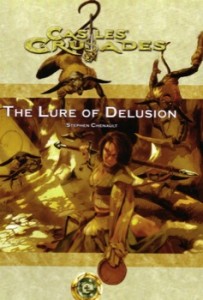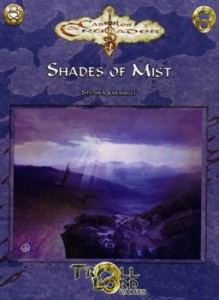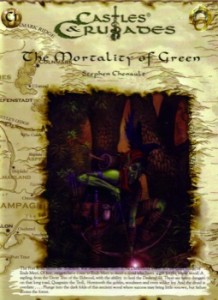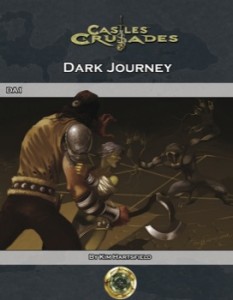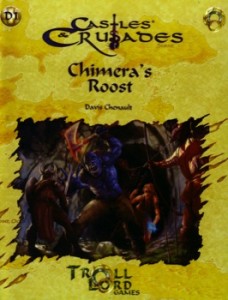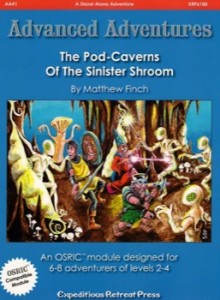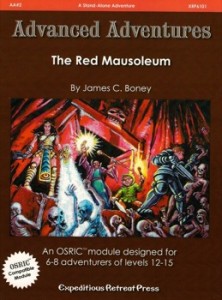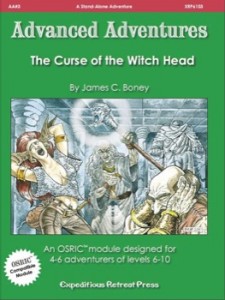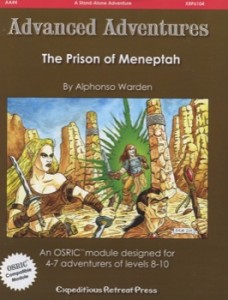This is an adventure module for the Castles & Crusades system but it can be easily converted to any pre-4E D&D system. More on this at the end.
A small thorp near the town of Lead Hill has just has two of their children go missing in the middle of the night. Just recently, a ranger was found dead nearby and the residents are worried that it’s related to their driving a hag out of town a few years earlier. What we need here is a good stout band of adventurers to swoop down and save the day!
This module, like C1 & C2, is set in the Drakenfold forest. C1, and to a lesser degree C2, had a very strong dark fairy tale feel to it that I really enjoyed. This one … not so much … or at all. It starts in a little inn in the town of Lead Hill. The party overhears some locals huddled around another table discussing the disappearance of two children in a nearby thorpe. The party can spend some time questioning the locals and may come up with some interesting facts before they move on to the thorpe. There they can get some more information from the locals and investigate the house where the kids were taken from.
This is a good point to talk a little about investigations in adventures. This is a short adventure and the questioning at the inn and the investigation of the home are almost half of the adventure. The investigation at the home is composed of tracking skill checks. CSI: Borderlands is not going to go very well if the party doesn’t have a ranger. IF the ranger looks on the roof, and makes a skill check THEN tell the players X. If you don’t have a ranger and they look then you can tell them 1/8th of X. I was moderately surprised at this; I was expecting no information in a failed check and was prepared to rail against it. Generally these things are a railroad: if you fail the skill check or don’t ask the right question then the adventure can’t go on. In this case the party gets just enough information to proceed along with the adventure, even if they do fail. This is a nice way to handle things and makes the best of of a bad situation: skills. I can’t stand skill checks. I’d rather have the players role-play the outcome of something and allow everyone to track, open locks, etc. I want my players to try to do everything they can to NOT roll dice. Because that means they could fail. A tracking adventure? What if the party doesn’t have a ranger, or he doesn’t show that night? Anyway, with a ranger and a successful tracking check then the party can get a little more information about the bad guys they are about to chase. Without those two get only know that the tracks lead north in to the forest.
The chase is going to take two full days and there’s a rather generic wandering monster table provided. It appears to just be a wandering table for ‘Forest’ pulled from a core rules booklet. As such there’s not any customization of it and it comes off as just another boring wandering table, albeit a big one. I find these multi-day journeys interesting. There was something similar in C1 and C2 and they threw me there just as they are throwing me here. Many of the older modules had an overland portion, some substantial, however they didn’t throw me the way these are. Maybe because there’s a chase involved and a multi-day chase seems alien to me. Clearly it happened to Aragorn & Co as they followed Merry & Pip, but it just feels strange here. I’m probably just unaccustomed to it.
There’s are two small combat encounters during the chase on the way to the big bad. Both of them have an interesting way of handling morale, which I don’t want to give away. I thought it was a very clever way of achieving a morale-like effect. The final encounter with the big bad is interesting also, and I don’t want to give anything away. The treasure wasn’t that interesting; I always want MORE from these. Some kind of strange & weird magic items customized for the world they are appearing in. Instead we get coin and some “sword +1” stuff. Yeah, that’s pretty standard fare and it’s difficult to say it’s a missed opportunity when that sort of thing seems to be norm in design.
Monster stats can be used as is, or just taken from your own games monster manual; they are very similar to each other. The only real conversion is the AC, which is ascending in C&C. I pull XP from the DMG 1E. Skill checks are taken by adding 15 to the C&C level for 3E games. So a C&C CL2 check would be 15+2=DC 17. For pre-3E games you can just use the characters skill checks, since there are not difficulty levels.
This is available at DriveThru.
https://www.drivethrurpg.com/product/64064/Castles–Crusades-S1-Lure-of-Delusion?affiliate_id=1892600

